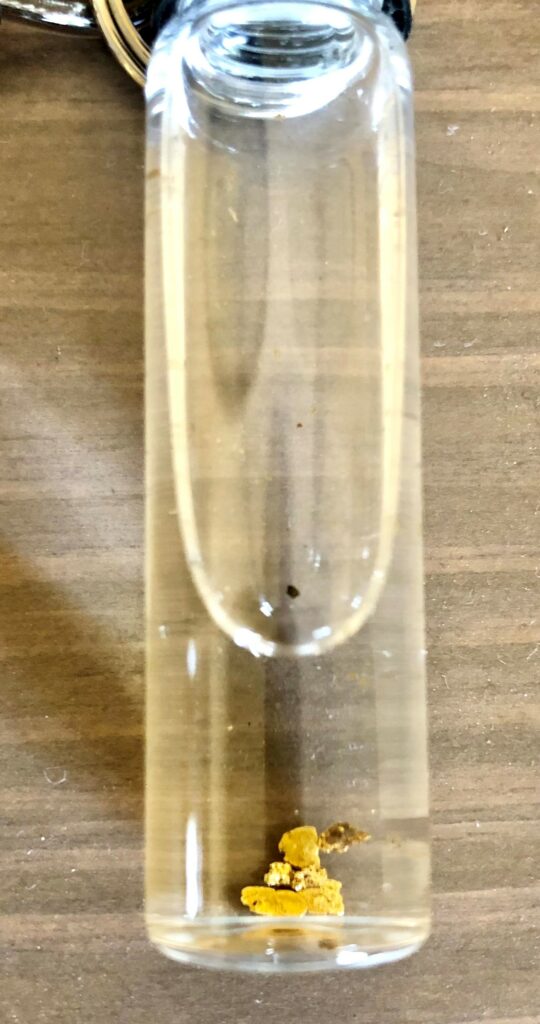Instructors: Bonnie Fuller, in collaboration with Glen Thielmann
There are so many examples, projects, events, and experience that could be highlighted from this 6 credit course. Bonnie introduced us to an extensive range of resources and practical hands-on lessons related to math and science curricula. Her teaching style always incorporated activity-based learning, and as such, we were able to not just learn about methods of teaching and examples of effect lessons, but experience them for ourselves. This, in conjunction with Glen’s place-based pedagogical influence during collaborative times, made for endless items of value to discuss with regards to teacher education.
Panning for Gold: A Place-Based Lesson in Density
Density, as far as lessons concepts in science go, can be rather bland when learning it from a book or having it described to you ratios of mass and volume. Density itself is a fine and valuable concept to learn, but how one might go about applying their understanding of density can drive economies! For me, the most important take always from EDUC 372 was how influential and effective physically performing activities can be when learning math and science, and how impactful the location (place) where the activity is performed is.
Below is an image of the day we did some gold panning at Shane Lake. The process involves applying the scientific concept of density, some technique, and a little patience. Density is described as the mass of a substance divided by its volume–in other words, how much mass of a substance can be packed into a defined volume? For example, if you were to use a celebrated scale to weigh out 1 gram of water near room temperature, then subsequently measure its volume, it should roughly read 1 milliliter. This is because the density of water is roughly 1 g/mL. If someone wanted to predict the buoyancy of a substance (determine if a substance would float or sink) in water, they would simply need to measure its density and compare it with that of water (or physically drop some of it in water I suppose). If the substance’s density is less than 1 g/mL, it will float, and if its density is greater than 1 g/mL, it will sink. This comparison of densities is exactly the concept employed when panning for gold.
When panning for gold, you will be searching through sediment and gravel (usually in a stream bed) that you suspect has gold distributed throughout it. The gold flecks are often small and difficult to see amongst the myriad of colours presented by other sediments so the goal is to isolate the gold from all other substances. Using a gold pan to shake and disturb the sediment sample while water is washed over and through it, the pan slowly empties and potentially leaves behind any flecks or nuggets of gold contained in the sample. This is because the density of gold is approximately 19.3 g/mL with respect to other sedimentary rock that have far lower densities (Sand, 1.52 g/mL; limestone, 1.55-2.75 g/mL; marble, 2.67-2.75 g/mL; shale, 2.06-2.67 g/mL; slate, 2.72-2.84 g/mL; pyrite, 5.0 g/mL–taken from Density of Rocks and Soil). By using the known densities of these materials, the behaviour of the gold when washed and shaken amongst the other sedimentary substances should be obvious–it will sink to the bottom. And that’s exactly what happened.

